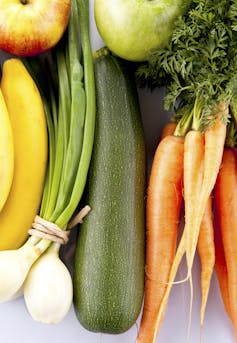We’ve recently seen some encouraging improvements in closing the gap on Indigenous disadvantage: better educational outcomes, higher child immunisation rates, more health checks, and a 35% drop in the gap between Indigenous and non-Indigenous child deaths.
But Aboriginal and Torres Strait Islander people continue to suffer a much greater burden of ill-health than other Australians. The gap in Indigenous life expectancy at birth remains unacceptably high at 10.6 years for men and 9.5 years for women.
Three-quarters of Indigenous deaths are from potentially avoidable causes. These include preventable conditions such as type 2 diabetes, cardiovascular disease and some cancers. A major contributor to these preventable conditions is excess body weight.
Widening obesity gap
Around 70% of Aboriginal and Torres Strait Islander adults are now overweight or obese compared with 63% of non-Indigenous Australians.
While the data is patchy, 30% of Aboriginal and Torres Strait Islander children appear to be overweight or obese compared with around 25% of non-Indigenous children. A further 8% are underweight.
A recently published study of weight trends of children in New South Wales shows the gap in weight status between Aboriginal and non-Indigenous children is widening. From 1997 to 2010, rates of excess weight and obesity rose 22.4% in Aboriginal children, compared with 11.8% in non-Aboriginal children.
The waist-to-height ratio, which indicates a greater lifetime risk of chronic diseases such as heart disease and Type 2 diabetes, increased by more than 30% in Aboriginal children. Urgent action is required to reduce these risk factors and avoid worsening life expectancy.
Focus on diet
In order to promote healthy weight it’s essential to focus on improving children’s diets. While physical inactivity is a problem, poor diet is the biggest contributor to disease, followed by obesity and smoking.
The recently published NSW study found that, compared with other children, Aboriginal kids had significantly lower odds of eating breakfast. They were also more likely to drink at least one cup of soft drink a day, to eat dinner in front of television and to watch excessive amounts of TV during the week.

Perhaps surprisingly, the researchers found no difference between the reported intake of fruit and vegetables, and some “junk” foods. But the amounts of foods were self-reported, which raises questions about the validity of the dietary findings.
All available objective measures show much lower intakes of fruit and vegetables in Indigenous groups: around one serve a day compared to the recommended two serves of fruit and five serves of vegetables a day. Indigenous Australians are twice as likely to have no daily fruit intake and seven times as likely to consume no daily vegetable intake as other Australians.
Indigenous groups particularly often overstate the healthiness of their eating habits in self-reported studies. This makes data collection difficult, and is one reason nutrition was excluded from the Closing the Gap initiative.
But this also suggests Indigenous people have a good knowledge of nutrition, perhaps because of previous projects such as the Go for 2 and 5™ fruit and veg promotion campaigns.
What programs are working?
Growth assessment and monitoring programs can help manage both poor growth and excessive weight gain in young children, but are not widespread outside the Northern Territory.
Several primary care programs focusing on early life also operate in community-controlled organisations, such as the Ngaanyatjarra Pitjantjatjara Yankunytjatjara Women’s Council.
But to effectively reach the large numbers of Indigenous children affected, well-funded community nutrition promotion projects are also required.
Among popular school-based projects, Need for Feed in Cape York, developed in partnership with Diabetes Queensland and the Apunipima Health Council, increased rates of high-school students meeting recommended dietary intakes. The project reported a 60% increase in students being able to independently prepare and cook healthy food.
The Uncle Jimmy’s Thumbs up! project focuses on making healthier choices, particularly water instead of sugar-sweetened drinks and fruit and vegetable snacks instead of “junk” foods. The pilot was run in four Arnhem Land schools and is being expanded to other areas with supportive messages in Arnhem Land Progress Association and Outback Stores.

Several less structured school-based projects are being implemented elsewhere.
Programs that are initiated and managed by the community and value Indigenous knowledge are most likely to be effective. Healthy Jarjums Make Healthy Food Choices, for instance, was an early years and primary school-based program that focused on Indigenous traditional and contemporary food practices. It was shown to improve nutrition knowledge and preferences for healthier choices.
At a broader level, comprehensive community-based interventions such as at Minjilang have demonstrated rapid, marked improvements in objective biomedical and dietary measures. But lack of capacity and funding now hinders extension and roll-out of these successful programs.
Overall, more than 100 nutrition projects have commenced in Indigenous communities, but many have failed because of poor levels of resourcing and evaluation.
Next steps
While it is surprisingly clear what needs to be done to improve the health of Indigenous children, recent cuts to Indigenous preventive health workforce and nutrition programs throughout Australia have severely reduced capacity to respond.
Without coordinated, sustained national action, efforts to improve the diet, nutrition and weight status of Aboriginal children are likely to fail. It’s time to seriously address this critical and increasing gap in Indigenous health.

